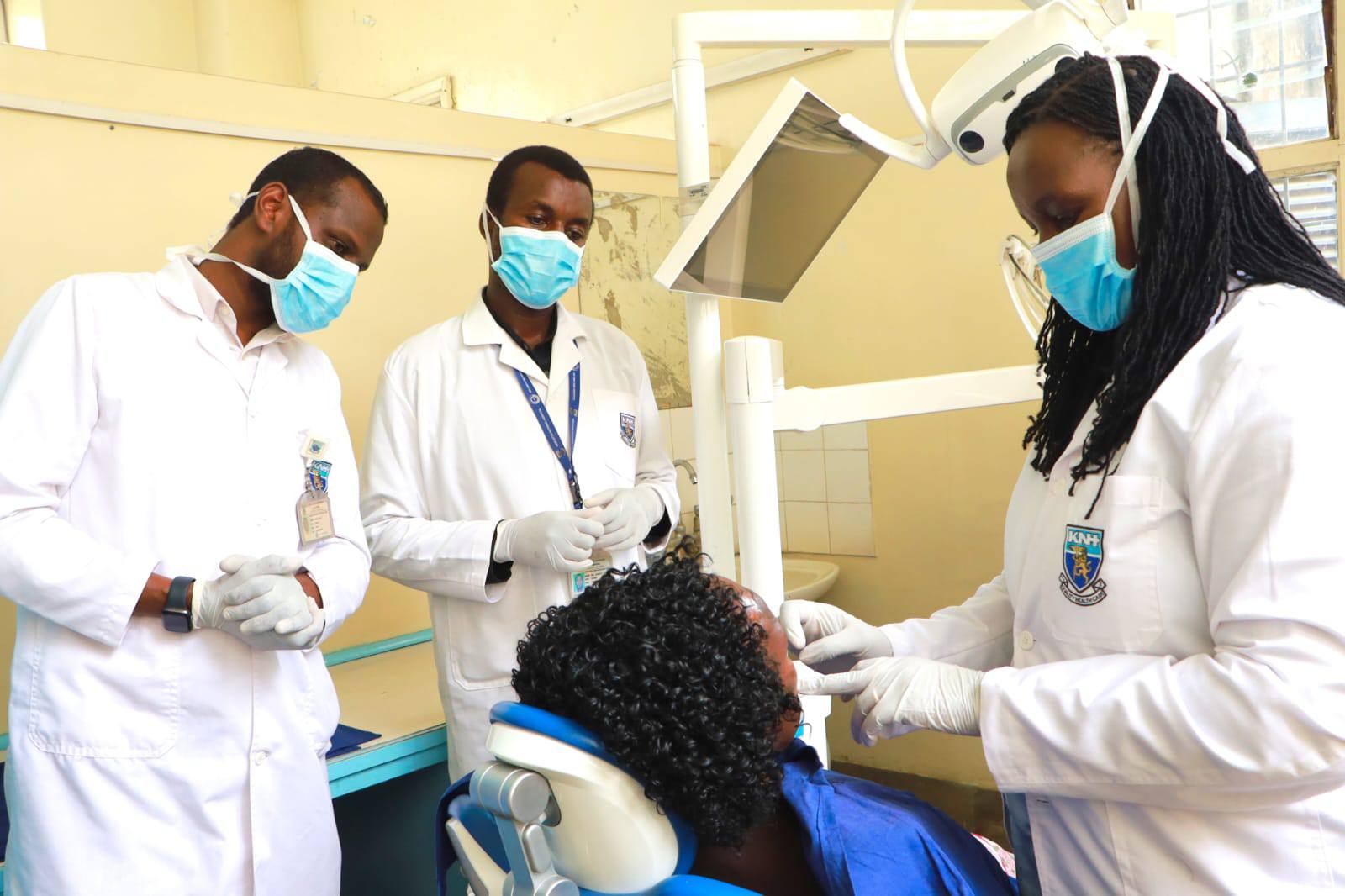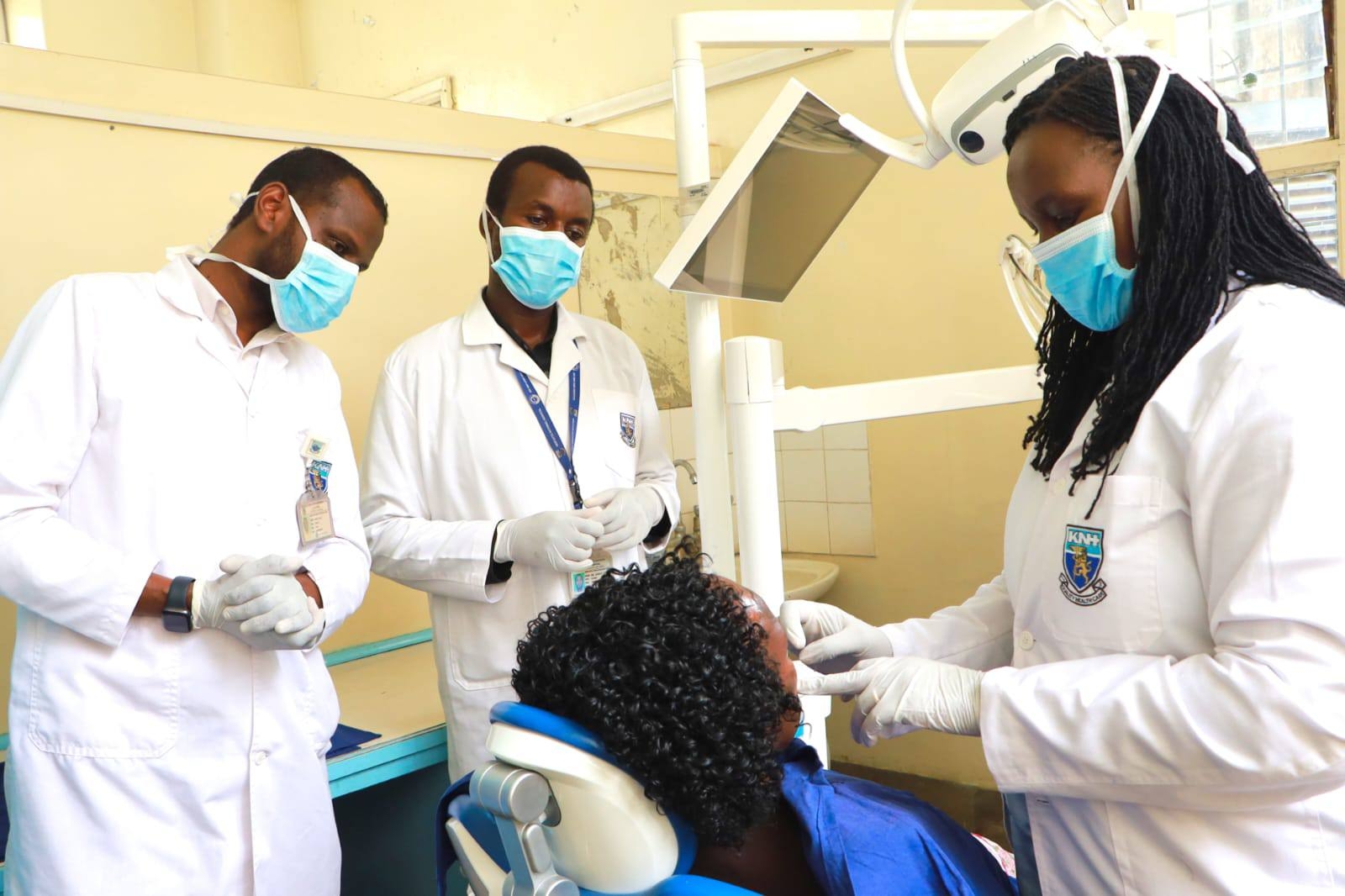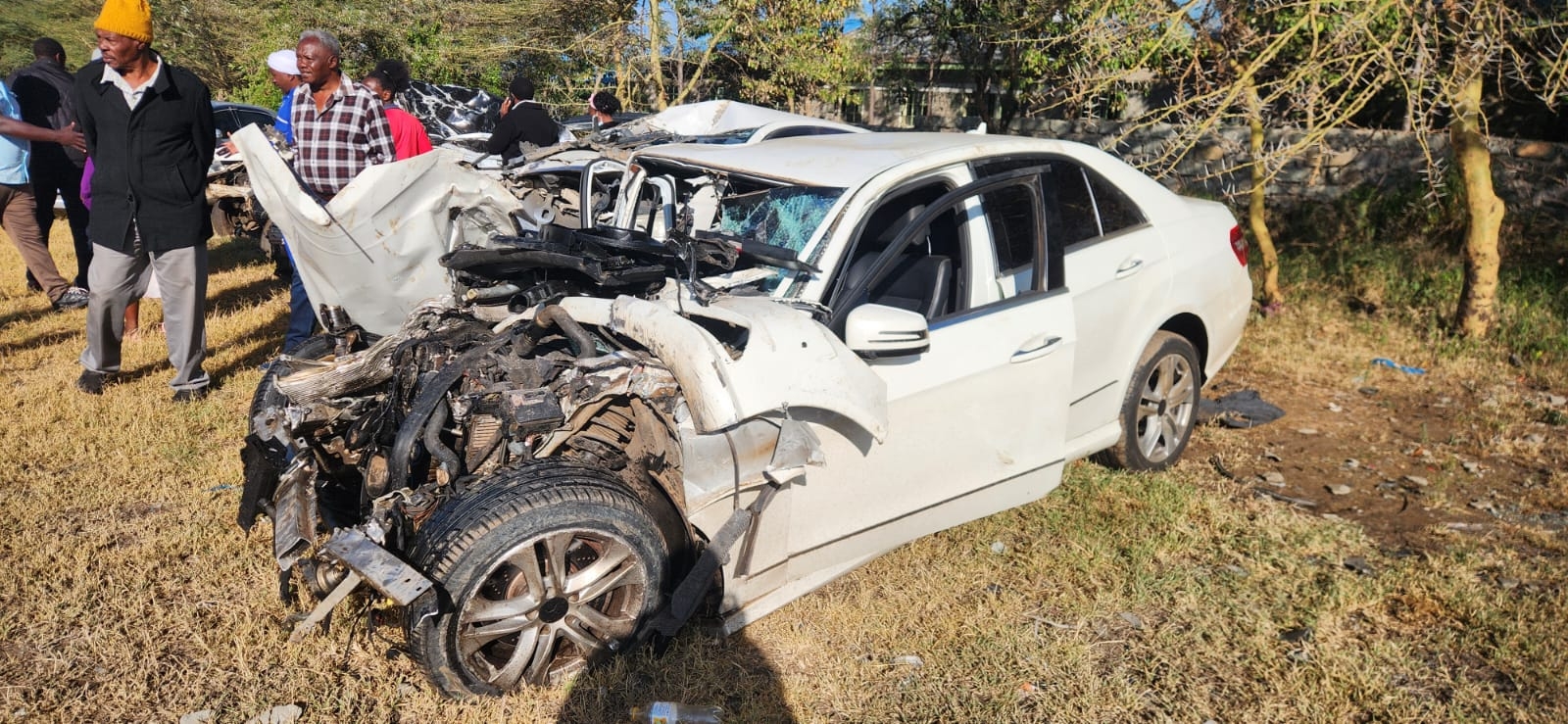

Kenyatta National Hospital has successfully
undertaken Kenya’s first zygomatic implant surgery, aimed at restoring a woman’s
nose.
After years of operation, 51-year-old
Dormitila Yula lived behind bandages, prompting specialists to come up with a way
to repair the damage done.
The specialists designed a
custom-made silicone prosthesis to recreate her nose’s natural structure,
anchored with zygomatic implants fixed securely into her cheekbones.
The complex, computer-planned
procedure required two months of preparation and a six-hour surgery.
When a person loses part of their
upper jaw or nose due to trauma, infection or cancer, restoring both appearance
and function becomes a complex challenge.
Traditional reconstructive surgeries
often involve multiple procedures, long recovery times and sometimes,
incomplete results.
But modern medicine has found a
groundbreaking solution that’s changing lives — zygomatic implant surgery.
In simple terms, zygomatic implant
surgery is an advanced reconstructive and dental procedure that anchors
artificial facial or dental structures to the zygomatic bone, commonly
known as the cheekbone.
Unlike conventional implants that
rely on the jawbone, this technique utilises the cheekbone’s density and
strength, making it possible to rebuild areas where bone loss is extensive,
such as the upper jaw, nasal region or mid-face.
How
the procedure works
The surgery begins with detailed
virtual planning.
Surgeons use three-dimensional (3D)
imaging, CT scans and digital modelling to map the patient’s facial anatomy.
This digital plan helps determine
the exact position, length, and angle of each implant. Once the surgical plan
is finalised, the procedure is performed under general anaesthesia.
During surgery, the surgeon
carefully inserts titanium implants into the zygomatic bone through the
mouth or side of the face.
These implants act as strong anchors
to support facial prostheses, such as a nose, upper jaw or dental bridge.
Depending on the case, one or more implants may be placed on each side of the
face.
Once positioned, the implants fuse
with the bone through a process known as osseointegration, ensuring long-term
stability.
Osseointegration is defined as a direct structural and functional
connection between ordered, living bone and the surface of a load-carrying
implant.
It is critical for implant stability and is considered a prerequisite for implant
loading and long-term clinical success of endosseous dental implants.
In cases involving facial
reconstruction, like that of Yula, the implants are used to secure a silicone
prosthesis that restores both appearance and function.
The prosthesis is custom-designed to
match the patient’s facial contours, skin tone, and texture, offering a natural
look and improving quality of life.
Why
it’s revolutionary
Zygomatic implant surgery represents
a major leap forward for patients who have lost facial structures due to cancer,
trauma or congenital deformities.
In the past, such patients often had
limited options; many were left to cope with disfigurement or undergo multiple
complex bone grafts with unpredictable results.
The procedure’s innovation lies in
its minimal invasiveness and long-term reliability.
The cheekbone is one of the
strongest and most stable bones in the skull, providing an excellent foundation
for implants even when other areas lack sufficient bone mass.
This eliminates the need for bone
grafting, shortens recovery time, and reduces surgical complications.
Moreover, the implants are
compatible with prosthetic rehabilitation, allowing specialists such as
maxillofacial surgeons and prosthodontists to work together in designing
realistic, functional replacements.
This multidisciplinary approach
means patients can regain not just facial structure, but also vital functions
such as speech, eating, and breathing.
The
team behind the surgery
A successful zygomatic implant
procedure requires collaboration between various medical experts, including maxillofacial
surgeons, prosthodontists, plastic surgeons and radiologists.
Each specialist contributes a unique
skill set to ensure precise planning and execution.
At Kenyatta National Hospital (KNH), the pioneering team included doctors Adeline Vilembwa, Andrew Okiriamu, and Margaret Mwasha.
Recovery
and outcomes
Recovery from zygomatic implant
surgery depends on the extent of reconstruction.
Patients typically remain in
hospital for a few days for monitoring. Once discharged, healing continues over
several weeks as the implants integrate with the bone.
The prosthesis, whether nasal,
dental, or orbital, is fitted after sufficient healing.
With proper care and hygiene, the
implants can last many years. Most patients report improved confidence, comfort
and social interaction after surgery.
In Dormitila’s case, the
transformation went beyond the physical. After years of living behind bandages,
she could finally show her face again.
“KNH has given me a new lease on life,” Dormitila shared.
“For eight years, I covered my face in shame. But now, I have a new nose. I can walk comfortably, go about my daily business, and sing in my church choir with confidence. I’m forever grateful.”
The broader impact
The success of zygomatic implant
surgery at KNH signals a new era for reconstructive medicine in Kenya and the
region.
It opens doors for patients who previously
had to seek specialised treatment abroad.
The hospital’s use of digital
planning, 3D printing and multidisciplinary expertise reflects growing
local capacity for high-level medical innovation.
In essence, this procedure is not just about restoring faces. It’s about restoring dignity, confidence, and the ability to live fully again.


















